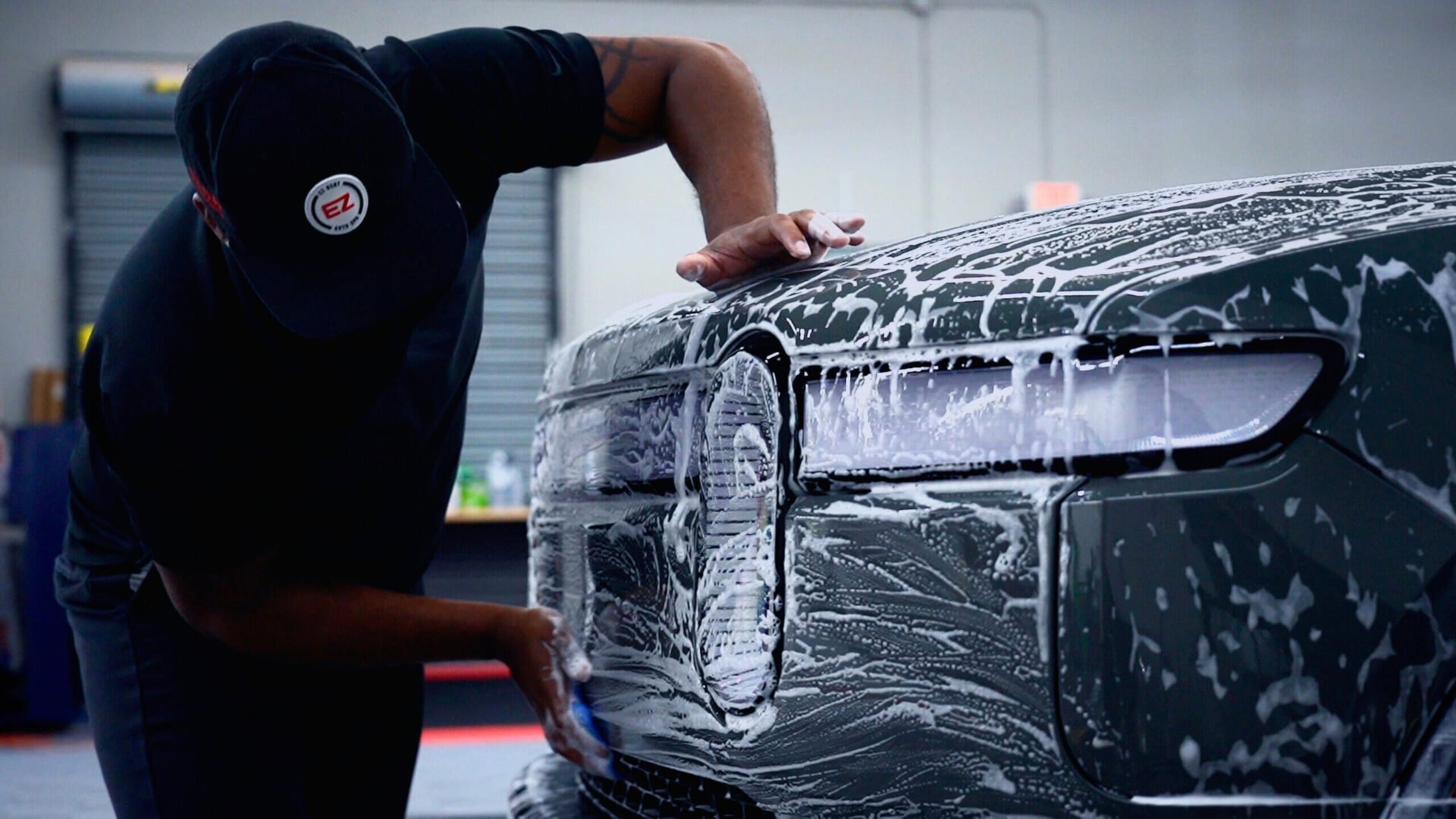Discovering the Science Behind Ceramic Coating and Its Influence on Auto Outlining
The application of ceramic finish in vehicle detailing stands for a substantial improvement in auto care, rooted in its sophisticated chemical buildings, mainly silica dioxide and titanium dioxide. As we discover the complexities of the application procedure and the lasting effects for automobile upkeep, it becomes clear that the choice of ceramic finishing can essentially modify one's method to vehicle treatment.
What Is Ceramic Finishing?
Ceramic covering is a modern-day option that has acquired appeal in the automotive outlining market for its capacity to supply resilient protection for car surface areas. This sophisticated protective layer is normally composed of silica dioxide (SiO2), which develops a solid bond with the vehicle's paint, producing a long lasting shield versus environmental pollutants. Unlike typical wax or sealants, ceramic layers offer superior resistance to UV rays, chemical discolorations, and physical abrasions.
The application of ceramic finishing involves a precise process, where the automobile's surface area is completely cleaned and decontaminated before the coating is used (Ceramic Coating). Once cured, the finish improves the automobile's gloss, depth, and clarity, giving a showroom-quality surface that lasts for years. Among the essential benefits of ceramic layer is its hydrophobic buildings, which repel water and dirt, making maintenance easier and reducing the regularity of washes
The Chemistry of Ceramic Coating
A fundamental aspect of ceramic coating depends on its chemical make-up, largely characterized by the existence of silica dioxide (SiO2) This substance is integral to the development of a long lasting, protective layer that bonds chemically to the lorry's surface. When applied, the SiO2 particles go through a procedure referred to as polymerization, wherein they develop a network of interconnected structures. This results in a robust, hydrophobic surface area that fends off water and pollutants.
In addition to SiO2, lots of ceramic layers integrate titanium dioxide (TiO2) and other ingredients to improve their efficiency attributes. TiO2, for instance, adds to enhanced solidity and chemical resistance. The communication between these compounds produces an one-of-a-kind molecular structure that offers a high degree of protection versus environmental factors such as UV rays, acid rain, and oxidation.
Furthermore, the application procedure frequently entails a meticulous preparation of the surface area to make sure optimal attachment of the finish. This chemistry not only makes sure a lasting coating however likewise improves the visual charm of the vehicle. Recognizing the elaborate chemistry behind ceramic coverings is important for detailing specialists who intend to offer premium defense and durability for their customers' automobiles.
Benefits of Ceramic Covering
While detailing experts frequently highlight the advantages of ceramic coatings, their advantages extend far beyond aesthetic appeals. Ceramic coverings develop a hydrophobic surface area that drives away water, dust, and gunk, considerably reducing the frequency of washes and the initiative called for to preserve a vehicle's appearance.
Additionally, ceramic coatings enhance the long life of the car's coating. Unlike typical waxes or sealers, which may last a few months, ceramic finishes can sustain for years, giving a long-lasting solution for car care. This toughness converts to cost savings, as proprietors are much less likely to require frequent reapplication.
In addition, ceramic coverings are immune to chemical spots and etching, which can occur from acidic compounds like bird droppings or tree sap. This resistance not only preserves the car's aesthetic appeals but also lessens prospective damage - Ceramic Coating. Generally, the financial investment in ceramic layer uses automobile owners a considerable return in terms of defense, simplicity of maintenance, and resilient visual allure, making it a progressively preferred choice in the realm of automobile describing
Application Refine Discussed

When the surface area is effectively prepared, the ceramic coating can be applied. It is typically done in a regulated atmosphere, such as a garage or outlining bay, to stop contamination from dirt and debris. Using an applicator pad, the technician applies the coating in little sections, operating in a crosshatch pattern to make sure even insurance coverage. It is necessary to follow the supplier's instructions pertaining to application thickness and curing times.
Once healed, the ceramic covering forms a strong bond with the paint, providing enhanced security and a shiny surface. Correct application is important to maximize the durability and performance of the ceramic coating.

Long-term Effect On Car Treatment
The lasting impact of ceramic covering on vehicle treatment is significant, as it essentially changes how proprietors preserve their automobiles. By developing a resilient, hydrophobic layer on the lorry's surface area, ceramic finishes minimize the adherence of dirt, grime, and impurities. This residential or commercial top article property reduces the frequency of washing required, ultimately conserving water and cleaning items.
In Addition, the UV security offered by ceramic coatings helps to stop oxidation and fading of the lorry's paint, preserving its visual allure and resale worth gradually - Ceramic Coating. This safety barrier likewise decreases the chance of scrapes and swirl marks, which are usual concerns in standard paint surfaces
In addition, ceramic layers promote less complicated maintenance, enabling proprietors to cleanse their cars with minimal effort. The smooth surface area makes it challenging for contaminants to bond, enabling simpler removal throughout routine cleansing.
Over time, the investment in ceramic coating might cause cost financial savings in lorry treatment products and solutions. Generally, the enduring advantages of ceramic finishes not only improve the appearance of automobiles but additionally add to a much more effective and lasting technique to automobile upkeep.
Final Thought
Finally, the application of ceramic covering represents a significant advancement in vehicle detailing, driven by its special chemical make-up of silica dioxide and titanium dioxide. This innovation not just enhances the aesthetic appeal of lorries however likewise provides robust security versus environmental dangers and use. The lasting benefits, including minimized maintenance regularity and improved longevity, emphasize the value of ceramic finishes as a vital investment for maintaining vehicle look and integrity gradually.
